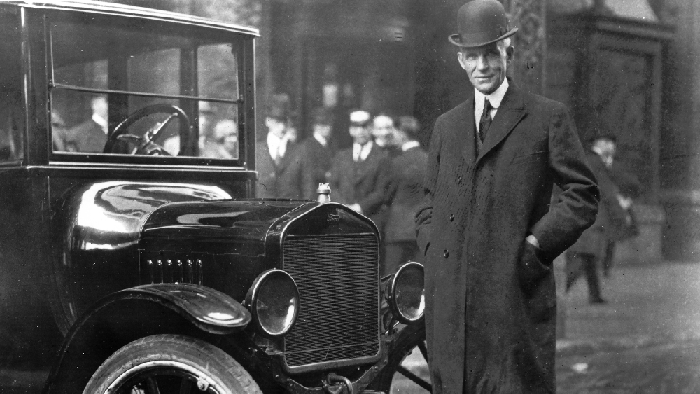Be On the Lookout!
Communication Arts
Excellent observational skills make us better designers—but like most things, they need practice.

One hour into my very first drawing class in my freshman year at the University of the Arts in Philadelphia, the instructor asked us to put down our pencils. “You all should know,” he said, “I can’t teach you how to draw.” We all sat stunned. Did we hear that correctly? He then added, “But, I can teach you how to see!”
We had been drawing a stack of wooden drafting tables that were haphazardly piled in the middle of the studio, trying to impress one another with our talent. The instructor informed us that all 24 of us spent more time looking at our own drawings than we did looking at the subject matter. And he was right. “You were drawing what you wanted to see, not what was there.” It was a memorable way to kickoff my four years of art education.
Several weeks later he assigned us with a challenging project—one that involved a block of styrofoam the size of a case of beer. All six sides of the cuboid were marked with a series of connecting lines, both straight and curved. In one week the instructor told us he would cut along all of the lines with a bandsaw to reduce the solid shape into a pile of irregular pieces. It was our task to draw what each of those pieces would look like. The assignment was a true test of our observational skills. Over the course of that first semester, our instructor proved true to his word—he taught us how to see.
I think it’s safe to say that those of us who attended art/design school never had a class called Observation 101. However, during those years, our visualizing skills improved. For most of us, that was probably the single biggest takeaway from our education. When you spend time with people from outside of the design world, you realize that you have developed a different way of looking at things. Not necessarily a better way of looking at things, but a different way.
In 2007, in an attempt to better understand people’s observational skills, Norwegian researchers Stine Vogt and Svein Magnussen developed a study where they recorded the eye movement of two groups, artists and non-artists, as they examined a series of photographs. Here is what they learned: “The artists tended to look at the picture as a whole while the other group tended to only look at the object that was the focus of the image. It comes down to training: artists have learned to identify the real details of a picture, not just the ones that are immediately most salient to the perceptual system, which is naturally disposed to focusing on objects and faces.”
A keen sense of observation is a skill most accomplished designers possess. It plays a significant role in all aspects of the design process—from research through production. However, designers can become complacent and forget that it’s a skill that constantly needs to be honed and practiced. With that in mind, here are five important reasons why we should strive to be better observers:
Heighten Awareness
The Metropolitan Museum of Art offers a course called “The Art of Perception” to New York City police officers and other law enforcement agencies. These unlikely art students analyze paintings from the Met’s collection and are encouraged to comment on anything and everything they observe. Discussions evolve around the painting’s setting, the people, the mood and the details. The more comfortable the police become with expressing their insights, the more they discern from the pieces of art. The NYPD supports this course for it has shown it noticeably improves an individual’s observational skills and, in turn, significantly aids the police in preventing and solving crimes. All of which goes to prove that the more we work at observing, the better we get at it. It heightens our awareness. I tell students to carry a small sketchbook and/or a digital camera with them at all times to record their observations. You can’t be expected to remember everything you see. Although you may not apply your observations right away, you now have a reliable source for future reference.
Identify Trends
A heightened awareness keeps us attuned to the world around us. As well as being sensitive to how things look, we should also be aware of how things work. This often leads to the discovery of trends. Take Henry Ford as an example. In 1914 he doubled the daily wage to $5.00 at the Ford Motor Company and shortened the workday from ten hours to eight. At the same time he shortened the workweek to five days, giving workers Saturday and Sunday off. Ford observed that people, if given more leisure time, would have more reason to want to own an automobile.
By giving his employees more money and more time off he was allowing them to do just that. As Ford said, “This increased consumption will require greater production than we now have. Instead of business being slowed up because the people are ‘off work,’ it will be speeded up, because the people consume more in their leisure than in their working time. This will lead to more work. And this to more profits. And this to more wages. The result of more leisure will be the exact opposite of what most people might suppose it to be.” Ford saw the beginnings of a trend, one he felt the automotive industry could benefit from and by making substantial changes in his company he capitalized on this insightful observation. Hockey great Wayne Gretzky put it best when he said, “I don’t go where the puck is, I go where I think it will be.”

Discover Opportunities
Observing the world from a fresh perspective can help us discover new solutions to old problems. The emerging science of biomimicry has shown us that a close examination of nature can lead to valuable insights for humans. The Lotus plant is an excellent case in point. Researchers found that the surface of a lotus plant leaf is actually very rough—a surface made up of tiny waxy scales that minimize adhesion. Water repels from the surface, carrying dirt particles with it as it beads off the leaf. Ipso, a German company, developed a paint that has the same characteristics of the water-repelling Lotus plant. This revolutionary Lotusan paint enables surfaces to become “self-cleaning.” As a bonus, buildings covered with this paint don’t stay wet for very long thereby attracting fewer damaging microorganisms and fungi. Biomimicry reminds us that there is always something exciting to be discovered if we remain open to new opportunities. You can increase your own chance of discovery by using mind mapping, the act of plotting all of your observations and thoughts around a particular word or topic on one page. This technique enables you to make connections that otherwise, you might never have considered.

Spark Innovation
People have a tendency to take things for granted, often over-looking important details. This can result in missed opportunities. Many innovations started with simple observations. Since 2007, United Parcel Service (UPS) has implemented computer-designed delivery routes that incorporate as many right-hand turns for their vehicles as possible. This revolutionary approach was developed after drivers complained about how much time and fuel they wasted while waiting to make left-hand turns. Right-hand turns keep trucks moving and cut down on waste. Known for efficiency, this fundamental change has had a huge impact on the company’s bottom line. In just one year UPS trucks drove 28.5 million fewer miles and used three million fewer gallons of fuel. They also reduced CO2 emissions by 32,000 metric tons, the equivalent of removing 5,300 passenger cars from the road for one year. We often ignore our observations, thinking they are trivial or insignificant. Sometimes the little things can make a big difference.
Enhance Our Skill Set
When Papillon Cakes approached our Toronto-based graphic design firm to redesign their brand, the partnership led to some surprising results. During the research phase of the project we observed a weakness in the order-taking process; potential customers were making their own notes during initial meetings. At our suggestion, clients now leave a meeting with a comprehensive Papillon Cakes order form that, along with the basic information and quoted price, outlines everything from diagrams of cake design options to a list of potential additional charges. Before the form, Papillon Cakes won 50 percent of their quotes; now with the form, they are winning 90 percent. Make no mistake, their cakes are exquisite. Nonetheless, the order form has played an important role in their improved sales. More and more designers are including “brainstorming” on their list of services. Clients are seeking objective and creative points of view to help them solve problems and identify areas for improvement.
As designers, learning to trust our ability to see things others don’t is an invaluable asset. The multi-talented Graham Chapman of the comedy group Monty Python once noted, “All ideas come about through some sort of observation.” Fine tuning our observational skills keeps us connected to this ever-changing world, and by staying aware we remain open to accepting and generating new ideas.